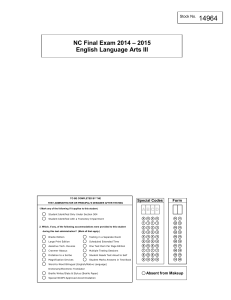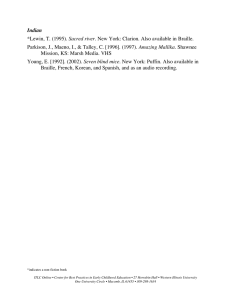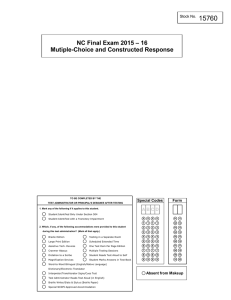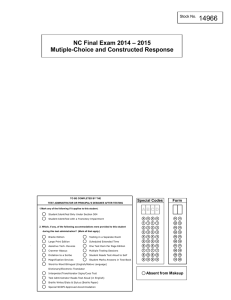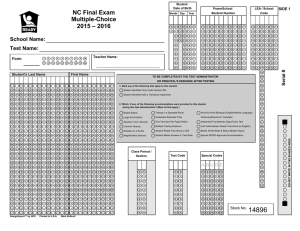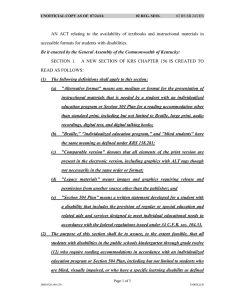pacun_examples.docx
advertisement
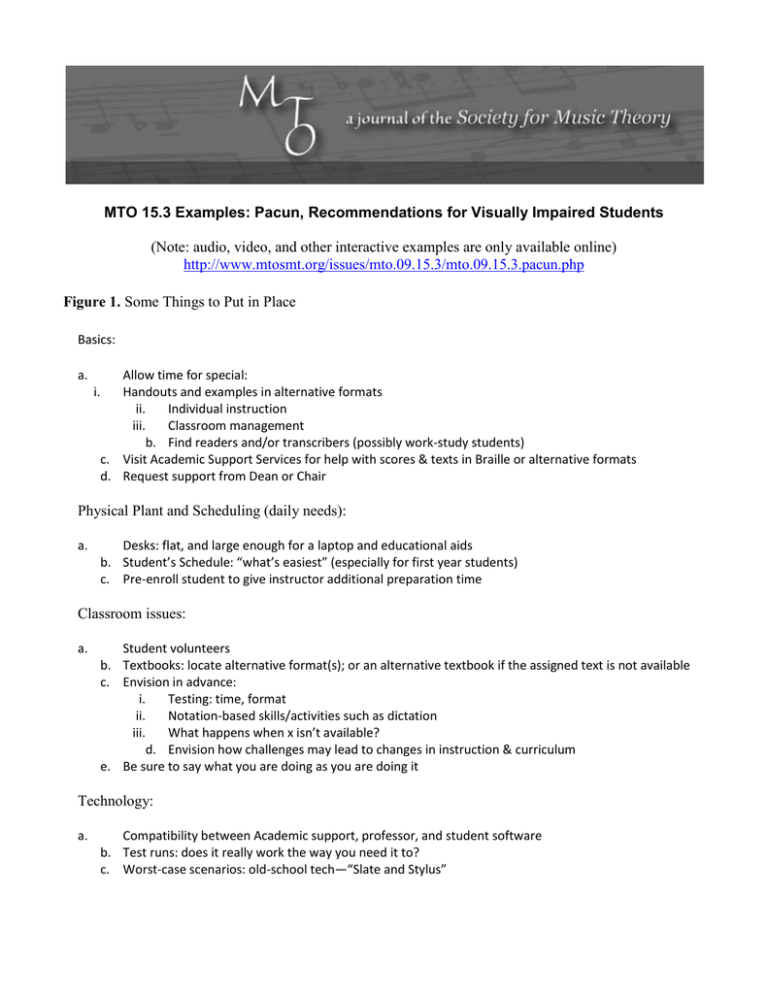
MTO 15.3 Examples: Pacun, Recommendations for Visually Impaired Students (Note: audio, video, and other interactive examples are only available online) http://www.mtosmt.org/issues/mto.09.15.3/mto.09.15.3.pacun.php Figure 1. Some Things to Put in Place Basics: a. Allow time for special: i. Handouts and examples in alternative formats ii. Individual instruction iii. Classroom management b. Find readers and/or transcribers (possibly work-study students) c. Visit Academic Support Services for help with scores & texts in Braille or alternative formats d. Request support from Dean or Chair Physical Plant and Scheduling (daily needs): a. Desks: flat, and large enough for a laptop and educational aids b. Student’s Schedule: “what’s easiest” (especially for first year students) c. Pre-enroll student to give instructor additional preparation time Classroom issues: a. Student volunteers b. Textbooks: locate alternative format(s); or an alternative textbook if the assigned text is not available c. Envision in advance: i. Testing: time, format ii. Notation-based skills/activities such as dictation iii. What happens when x isn’t available? d. Envision how challenges may lead to changes in instruction & curriculum e. Be sure to say what you are doing as you are doing it Technology: a. Compatibility between Academic support, professor, and student software b. Test runs: does it really work the way you need it to? c. Worst-case scenarios: old-school tech—“Slate and Stylus” Photo 1. Photo 2. Example 1. Transcription of Lego rhythms Figure 2. Super Quick Braille Primer Basics: Six-dot cells: top four for pitch, bottom two for rhythm. Key signature and meter are shown at top of score. Note equivalencies for rhythms: 1=1/16; 1/2=32nd, 1/4=64th, 1/8=128th. Gap=barline. Additional cells necessary for (# of cells in parentheses): Accidentals (2), Ties (2), Dynamics (2-4), Articulation (1–3), Slurs (2–3), Ornaments (1–2+) Repeat signs (cells) used whenever possible (measure level); signs also available for diatonic transposition of motives and measures. Multiple-part formats: Two or more separate lines: in rough alignment, or unaligned. Keyboard-style chords: shown by diatonic intervals above the bass (i.e. piano left hand), but below the melody (i.e piano right hand)—all from given pitch. “In-accord” format for soprano/alto and tenor/bass format (SA/TB): here the A follows the S; the student must assemble the measure in their head or at the keyboard. Specialized symbols available for all manner of keyboard (stemming) and string formats. Large-scale format: Music is best parsed into small segments (8–16 measures for single lines, 4–8 measures for multiple parts—all depending upon the skill and ability of the reader/musician). Caveats: Braille notation is distinct from Braille writing: “A[4]” ≠ “A” [tree ...]. Older scores may contain different cells and use unconventional formats. A linear and additive system Braille Literacy: owing to recent computer technology, as few as 20% of young blind music students now read Braille notation with any degree of fluency.
